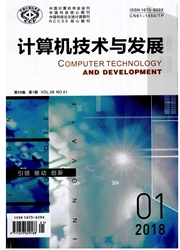

 中文摘要:
中文摘要:
由于信道的开放性,无线通信面临着被窃听的危险,通常采用加密来增强通信的安全传输。无线物理层密钥技术利用了无线信道的时变性和互易性,不仅可以实现“一次一密”,而且无需进行密钥分发,避免了传统加密技术中因密钥分发而引起的泄密风险,因而成为信息安全领域的最新研究热点之一。为此,对基于无线信道特征的物理层密钥生成方法进行了回顾与总结,并比较了各自优缺点。针对通信双方初始生成密钥的不一致性问题,从信息调和、一致性认证、保密增强这三个方面分析研究了密钥协商体系。归纳总结了一些典型的技术和算法,并对比分析了其优缺点。未来研究方向应是充分利用信道特征,并设计出更优的量化策略,提高初始密钥的一致性,降低信息协商的程度,同时要兼顾密钥的随机性以及密钥生成速率;在信息协商阶段,应设计出更好的信道编码进行纠错。
 英文摘要:
英文摘要:
Due to the openness of the channel, the wireless communication faces the danger of being eavesdropped, so it usually uses en-cryption to enhance the security of communication. The wireless physical layer key technology utilizes the time-varying and reciprocity of radio channel,not only to achieve "one-time pad" ,but also to eliminate the need for key distribution,avoiding the risk of leak caused by key distribution for the traditional encryption technology. Therefore it has become one of the latest research hotspots in the field of infor- mation security. For this reason, the physical layer key generation method based on the characteristics of the wireless channel is reviewed and summarized, and their advantages and disadvantages are compared. According to the inconsistent problem of the initial generation of the key, the key agreement protocol are analyzed in three aspects :information reconciliation, consistency authentication and privacy ampli- fication. Some typical techniques and algorithms are summarized, and their advantages and disadvantages are compared. Further research direction is to make full use of channel characteristics, and to design better quantitative strategies, which can improve the consistency of the initial key and reduce the level of information reconciliation. At the same time,the randomness of the key and the rate of the key gen- eration should be considered. In the key agreement phase, a better channel coding is designed to correct the error.
 同期刊论文项目
同期刊论文项目
 同项目期刊论文
同项目期刊论文
 期刊信息
期刊信息
